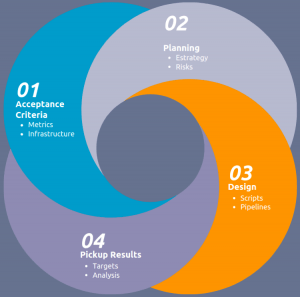What is Continuous Performance Testing?
Continuous Performance Testing (CPT) is, currently speaking of Performance Testing or Non-Functional Testing, operating within the life cycle of software development. At first, it might seem complicated, as we need a team capable of implementing and viewing scenarios that are more possible in real life, and to which the software application could be submitted concurrently by end-users. Today, large companies are in constant competition to provide faster and more efficient applications in compliance with their functions. This is why competitiveness and “time to market” have a great impact when it comes to performance tests.
CPT is the successor to Traditional Performance Testing as CPT is an integral part of DevOps.
How is CPT part of CI/CD?
They are free and private tools, which will help you to obtain correct risk points at the time of analyze the results obtained in your different proposed scenarios. This is why you must take into account the following points:
- Critical Paths.
- Acceptance or statistical criteria.
- Scenarios and Test Strategy.
While continuous integration has come to change the traditional way of working in how to perform performance tests, this new way of implementing performance tests favors testers a lot, as they work closely with developers and with other team members or cells in the different stages of the software development cycle.
Continuous integration contains combined automated and sequential processes in order to mitigate errors in the code. Here are the main functions to consider:
- Integration and participation in early stages within the software development cycle.
- Availability of source code in different branches.
- Cleaner test execution.
- Execution of tests based on compliance with acceptance criteria.
- Running tests in different environments.
This is how a performance project with continuous integration is part of DevOps, in the field of quality processes in compliance with software, with detection of errors in early stages, mitigation of errors in production environments, optimization at the level of functions, effectiveness in response times, mitigation of bottlenecks and cost reduction. All of this has an impact on benefits that favor both companies and end-users and related metrics in real-time.

Article written by Carlos Quiroz Vega, Arch. Performance Test




